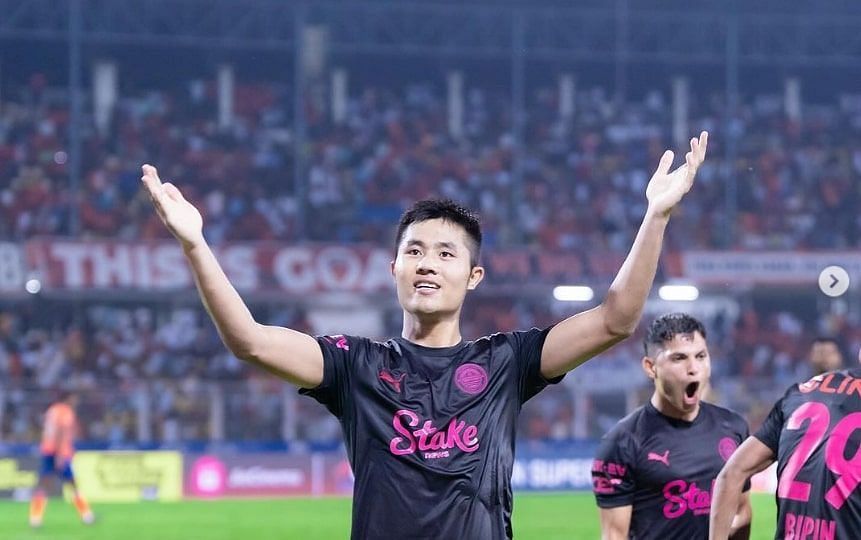
Why Apuia's arrival will be the missing piece of the puzzle for Mohun Bagan Super Giant
Mumbai City FC star Lalengmawia Ralte’s move to rivals Mohun Bagan Super Giant is undoubtedly the biggest transfer of the Indian Super League 2024-25 season so far. Apuia, as he is commonly known, is certainly one of the rising stars in Indian football, and his addition to the reigning champions will only strengthen their squad.
At just 23, Apuia has already won several honors with Mumbai City FC and played a pivotal role in their ISL Cup victory this season, ironically against Mohun Bagan. He has over 80 ISL appearances and has also competed in the AFC Champions League for two seasons.
From an outside perspective, this transfer appears to be the icing on the cake for the Mariners. However, the defensive midfield position has been an area where the team has lacked quality compared to their other positions.
The club’s high regard for him is evident, as he becomes the first player in the ISL to be registered outside the salary cap, following changes to the regulations ahead of the new season.
With that in mind, here are reasons why Apuia’s arrival seems like the final piece of the jigsaw for Mohun Bagan and why he is expected to become a key figure for both the Bagan side and the Indian national team in the coming years.
The role of tempo controller
Many Indian Super League teams are shifting towards a more possession-oriented approach, while there is also a noticeable gap in the different styles of play implemented by coaches.
Mumbai City have led the way in controlling possession for years, but last season saw Mohun Bagan also maintain over 50 percent of the ball in most games. With the arrival of Jose Molina, that figure is expected to rise, and Apuia will be central to every Bagan move.
The 23-year-old has excelled as a tempo controller for Mumbai City under both Des Buckingham and Petr Kratky and has continually improved in this role. Beyond just positioning himself near the center circle and distributing the ball, his timing for dropping deep and receiving passes from defenders has been impeccable, especially during the second half of last season.
Additionally, Apuia’s technical ability and passing range are often underrated. In ISL games, he will have more time and space to receive the ball and look up before progressing to the final third. He rarely loses possession in tight spaces, and his consistently sound decision-making will be crucial as well.
Playing in a deeper role will also allow his partner in the pivot to advance and add numbers in the penalty area, something Bagan struggled with last season due to the lack of a deep-lying playmaker in their ranks.
Versatility will increase his value to the team
Apuia’s versatility will be invaluable as Mohun Bagan are set to face a congested fixture schedule this season. While he is primarily expected to start in the number 6 role, it wouldn’t be surprising if Molina also deploys him as a box-to-box midfielder or even as a number 10.
Des Buckingham often used him as a box-to-box midfielder when Ahmed Jahouh was playing for Mumbai City, but Kratky preferred Apuia in a deeper role once Jahouh moved to Odisha FC. Initially, Apuia had to adapt to this position, but he has now seemingly mastered it. His effectiveness in various roles is remarkable, and he will only get better with age.
Additionally, utilizing Apuia higher up the pitch will create opportunities for young Abhishek Suryavanshi, who will benefit from learning alongside the former NorthEast United FC player.
For the Indian national team, Apuia’s role as a deep-lying midfielder and primary tempo controller will be an asset, especially as they have been searching for the right partner for Jeakson Singh.
Familiarity with the squad will benefit the Indian national team
Mohun Bagan are undoubtedly assembling the future core of the Indian national team. With players like Sahal Abdul Samad, Anirudh Thapa, Anwar Ali, Liston Colaco, Manvir Singh, and now Apuia, Bagan has key members who have been integral to the national setup for over a year.
Consider FC Barcelona’s influence on the Spain national team during their Golden Era. While the comparison may not really be fair due to the level of success, it certainly shows the advantages of players being part of the same club team. This club-country overlap helped the Spanish team develop a natural understanding on the pitch, something that helped them bamboozle opponents.
This will not only help Apuia quickly settle in at Bagan, given the high expectations, but it will also benefit the Indian national team in the future. Having a core group of players familiar with each other from their club side improves the team structure and understanding on the pitch.